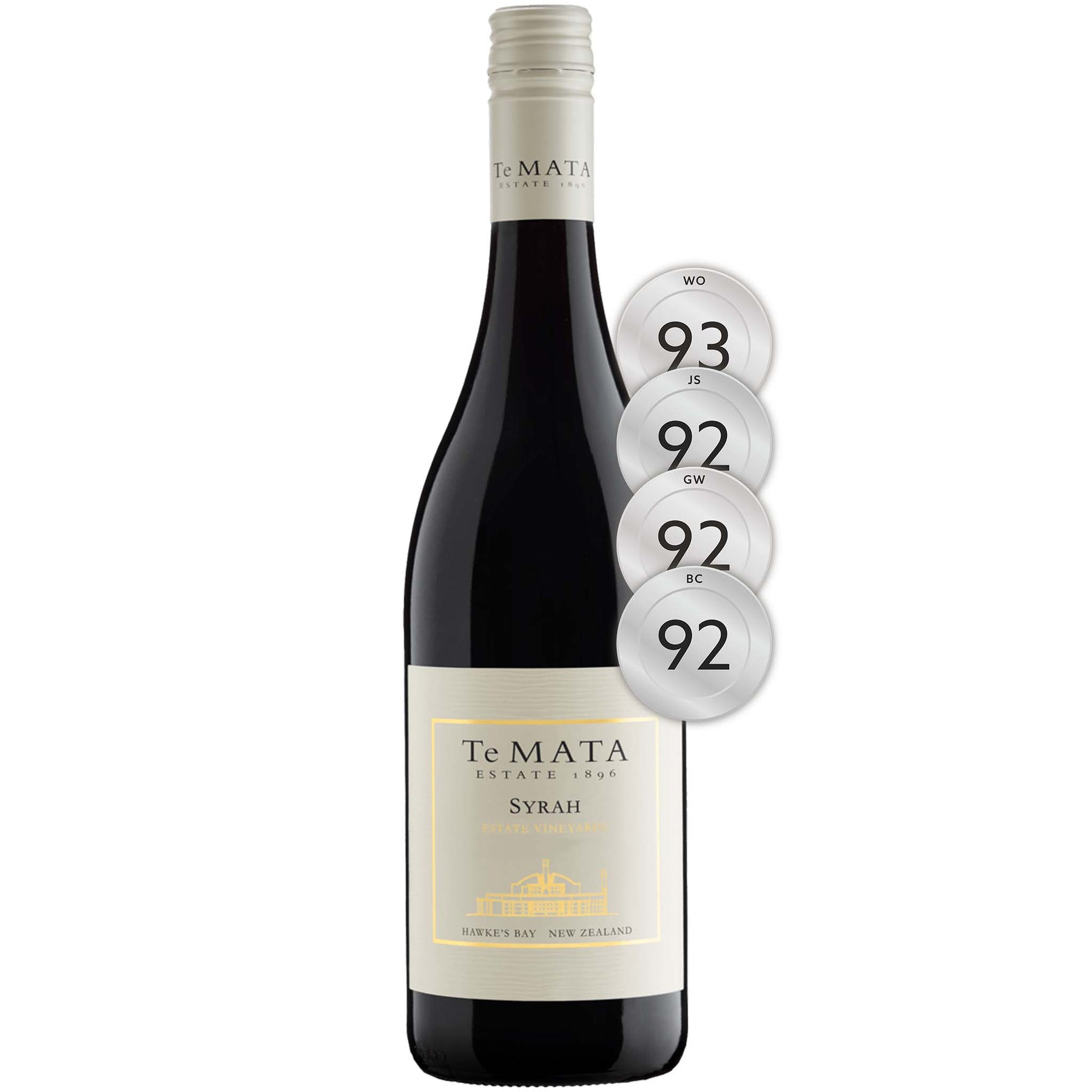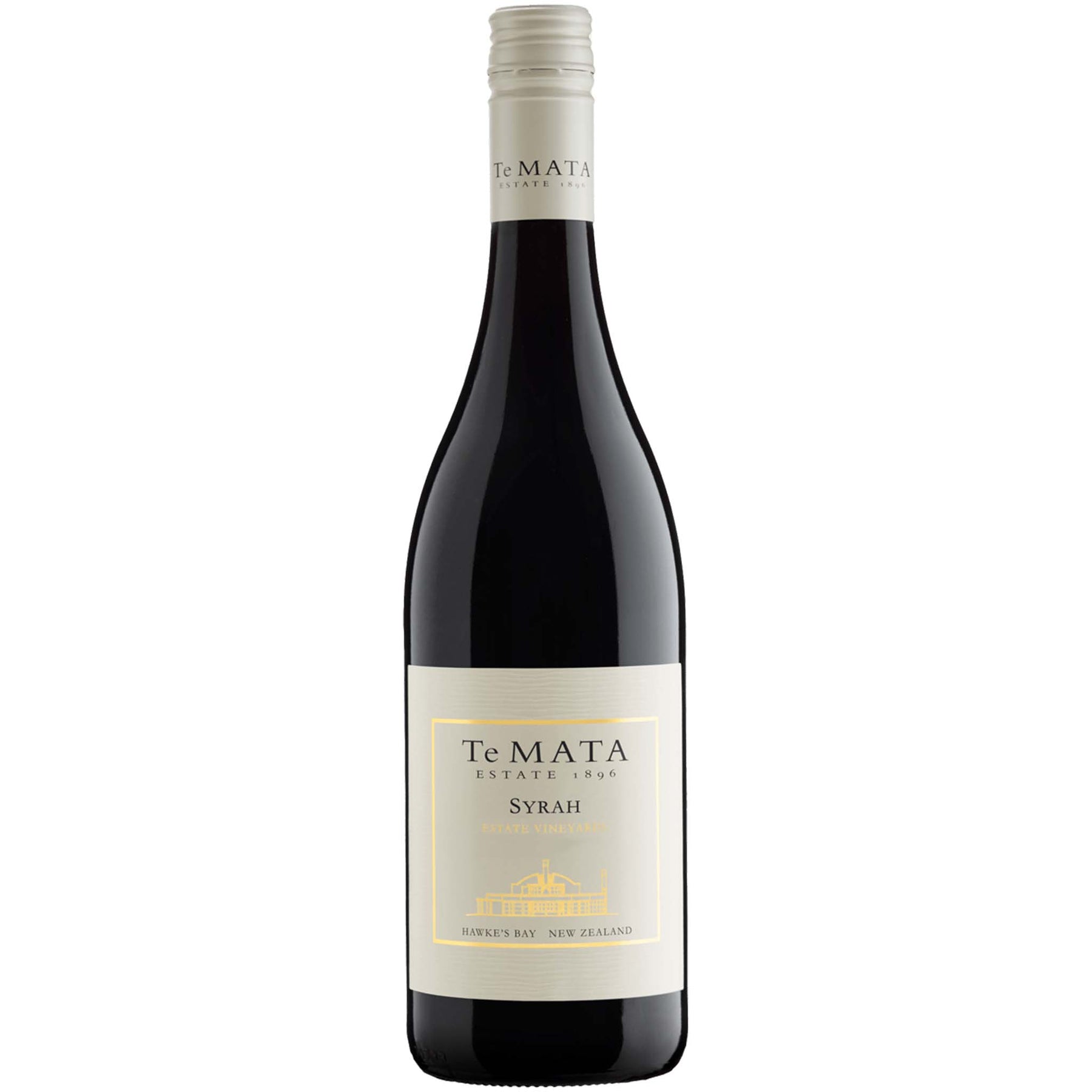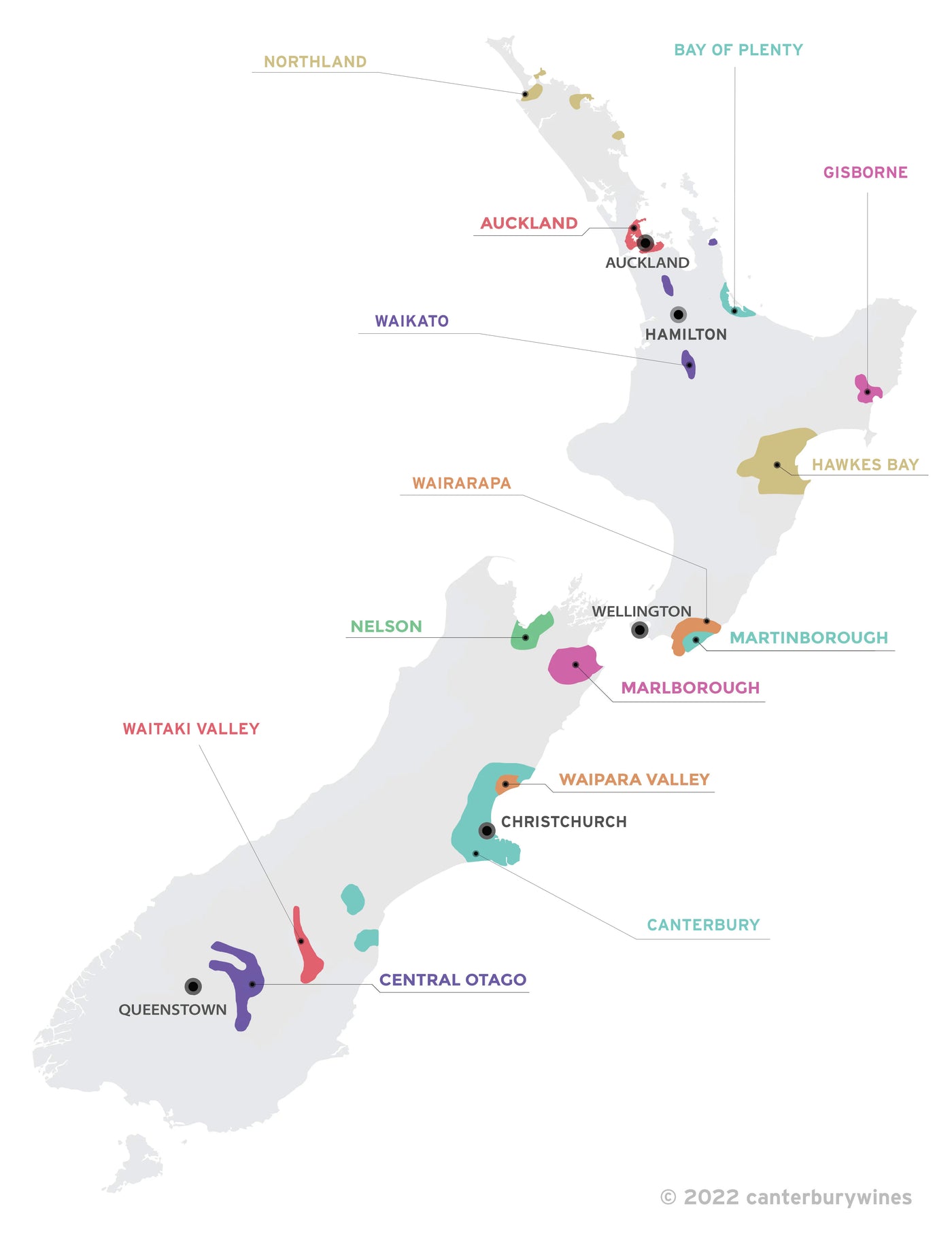

Te Mata Estate Vineyards Syrah 2021
Style: Red Wine
Closure: Screwcap
Te Mata Estate Vineyards Syrah 2021
Warehouse
34 Redland Drive
Vermont VIC 3133
Australia
Critic Score: 93
Alcohol: 12.5%
Size: 750 ml
Drink by: 2030
Te Mata Estate was established in 1896, specialising in high-quality wines of classical style. The winery remains family owned, producing internationally recognized wines exclusively from its Hawke's Bay vineyards.
The Estate Syrah is the younger brother to Te Mata's flagship Syrah, 'Bullnose'. It is a delicious and exceptionally well-priced blend of three subregions, predominantly the famed Gimblett Gravels, supplemented with fruit from Dartmoor Valley and Bridge Pa. Fruit that doesn't make the grade for the Bullnose is used in the Estate bottling.
"Pretty notes of pink peppercorns, lavender, rosemary, nutmeg and wild berries. Supple and creamy with a medium body and velvety tannins. Finely textured and very drinkable. Delicious now." James Suckling
"Dark and brooding in the glass, the Estate Syrah ’21 is ink-black with a vivid magenta edge. Lifted aromatics of concentrated raspberry and crushed violets. Layer upon layer of exotic spices, fruit cake, pancetta, vanilla, and cocoa run the length of this wine’s luscious palate. Dense, saturated, ripe, and enticing in its detail, the Estate Syrah ’21 delivers on every dimension.
The individual parcels of syrah from each plot were destemmed for fermentation and remained on skins for extended maceration before pressing. It was then run off to a mixture of new and seasoned French oak barrels for 12 months’ maturation, during which time it was regularly topped and racked. The wine received a traditional egg white fining before bottling." Te Mata Estate
Te Mata Estate Winery
Expert reviews
"The 2021 Syrah is a lovely wine. Delicious, in fact. The tannins are chalky and fine, bouncy and a little chewy (a very good thing). This is a gorgeous, slinky Syrah with a supple mouthfeel. Nice! This is spicy and very fine, and it features fruit from Gimblett Gravels, Dartmoor and Bridge Pa. The Bullnose fruit (the premium Syrah at Te Mata), if it falls out, will flow to Estate Syrah. Drink: 2023-2030." Erin Larkin, Wine Advocate - 93 points
"Pretty notes of pink peppercorns, lavender, rosemary, nutmeg and wild berries. Supple and creamy with a medium body and velvety tannins. Finely textured and very drinkable. Delicious now. Screw cap." James Suckling, JamesSuckling.com - 92 points
"Toasted hazelnut, peanut shell, pepper, Turkish apricot, blueberry and ripe raspberry. Medium-bodied, fleshy, sooty tannin, crushed herb and a subtle green charter set among spicy blue fruits and cocoa, closing with a dry wheaty finish solid length. No mistaking the grape variety here, and offers ease of drinking with a fair amount of complexity. Good. Drink: 2022 - 2027." Gary Walsh, The Real Review - 92 points
"An interesting mix of floral (violet), fruit (dark-fleshed plum, dark cherry) and savoury (dried herbs, dark chocolate and vanilla). Concentrated and complex wine with moderate cellaring prospects. Drink: 2023-2028." Bob Campbell MW, The Real Review - 92 points
About the winery

Te Mata Estate was established in 1896, specialising in high-quality wines of classical style. The winery remains family owned, producing internationally recognized wines exclusively from its Hawke's Bay vineyards.
"New Zealand's first growth" - Andy Howard MW, Decanter Magazine
"A national treasure" - Jancis Robinson MW
"New Zealand's greatest winery" - Robert Parker's Wine Advocate
Te Mata Estate was originally part of Te Mata Station, a large pastoral land-holding established by English immigrant, John Chambers, in 1854. After returning from France, John Chamber's third son, Bernard, had the idea to plant vineyards on the north-facing hills around Havelock North. In 1892 he planted vines on three parcels of hillside land above the homestead and began converting the original stables to ferment and mature the wines. The first vintage wines were released in 1986. Today, Te Mata Estate still uses those same three vineyards.
The Chambers family sold the property in 1919. The property had two other owners until John and Wendy Buck acquired Te Mata Estate in 1978 and instigated a twenty-year development program, which commenced with the restoration of the original winery building and the replanting of all of the original vineyards. In addition, new vineyard sites were acquired in the Bridge Pa, Gimblett Gravels and Dartmoor Valley sub-regions of Hawke's Bay (refer map below). The Buck family have been producing Te Mata wines ever since. The success of Te Mata's wines in the '80s is credited with sparking the revival of Hawke's Bay as a top wine region.

Te Mata Estate Winery and Hawke's Bay sub-regions

New Zealand
New Zealand is home to more than 700 wineries across 14 wine regions. The regions are Auckland, Bay of Plenty, Canterbury, Central Otago, Gisborne, Hawkes Bay, Marlborough, Martinborough*, Nelson, Northland, Waikato, Waipara Valley, Wairarapa and Waitaki Valley. * Martinborough is a sub-region of Wairarapa, however, as it is world renowned it is considered here to be a region to avoid confusion.
The wine regions in New Zealand stretch from latitudes 36°S (Northland) in the north (comparable in latitude to Jerez, Spain), to 45°S (Central Otago) in the south (comparable in latitude to Bordeaux, France). New Zealand's climate is maritime, producing cooler summers and milder winters than would be expected at similar latitudes in Europe.
Viticulture in New Zealand dates back to 1836 when British resident James Busby produced wine in the far north, but it wasn't until 1985 that the wine industry came of age when Cloudy Bay Sauvignon Blanc garnered international attention and critical acclaim.
New Zealand is internationally renowned for Sauvignon Blanc (particularly from Marlborough), Pinot Noir (Central Otago, Martinborough and Waipara Valley), Chardonnay, Bordeaux-style blends of mainly Merlot and Cabernet Sauvignon (Hawkes Bay) and Syrah (Hawkes Bay). Sauvignon Blanc accounts for 63% of the area of the national vineyard, followed by Pinot Noir (14%), Chardonnay (8%), Pinot Gris (7%) and Merlot (3%).


